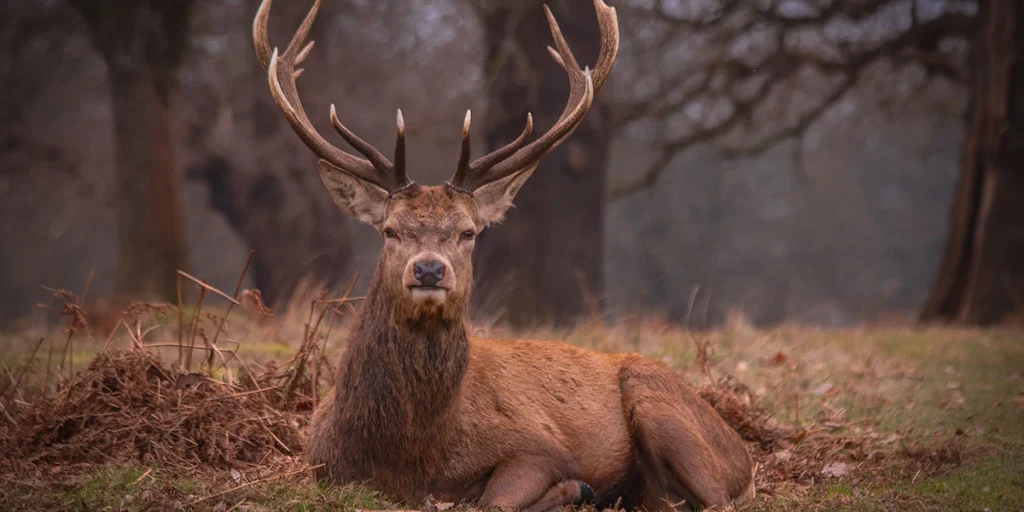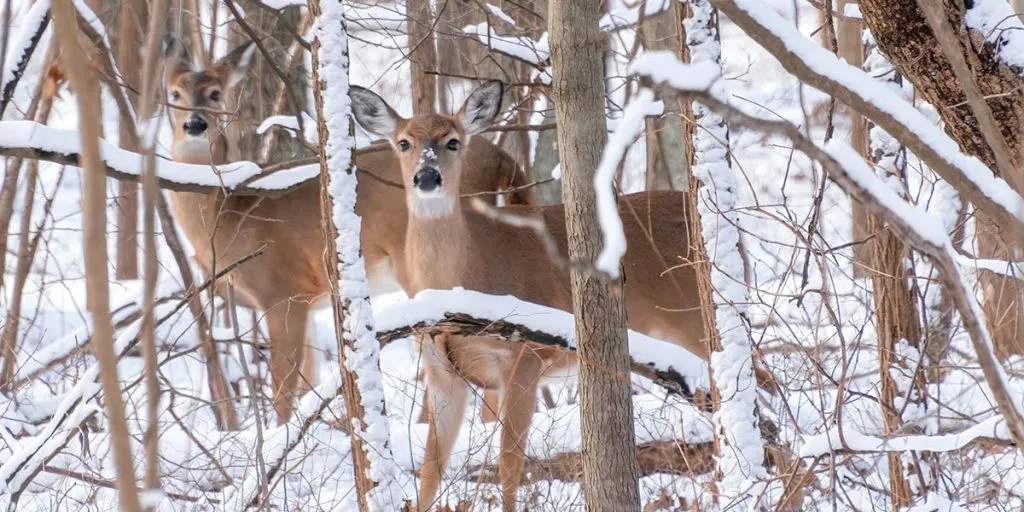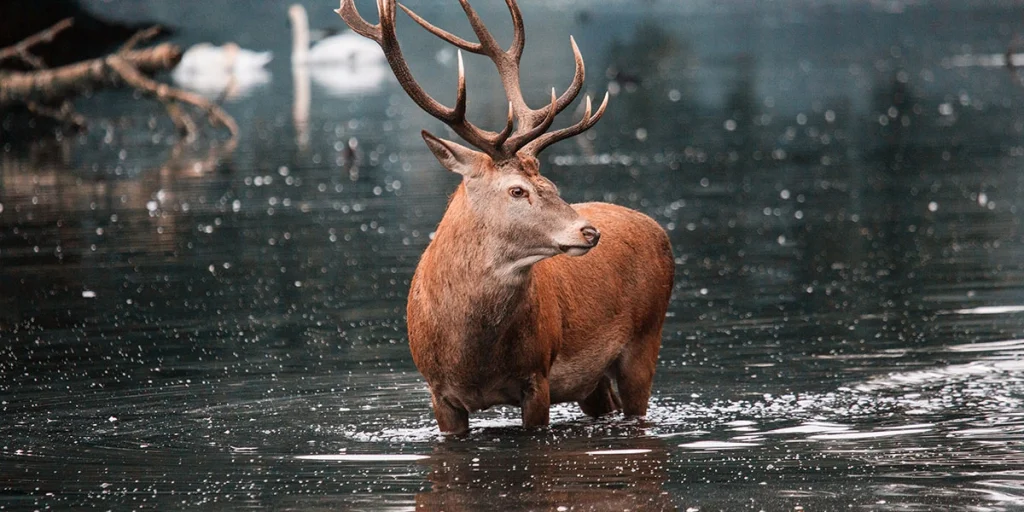A deer is generally seen as a harmless animal, but this could not be further from the truth. While not very aggressive, deer are still considered highly dangerous animals. They are actually more deadly to people than sharks, but it’s not for the reasons you might think.
Deer can be highly dangerous for people in cars, as they are a major cause of traffic accidents. Statistics show that deer cause an average of 200 human deaths in the United States every year, mainly by accidentally running into vehicles.
As for deer behavior, always remember that wildlife behaves unpredictably. Especially during rutting season (October – December), bucks will show aggressive behavior towards other males. A human (or the dog they are walking) can get caught up in a deer fight, which can lead to serious injuries and even fatalities.
Are Deer Dangerous To Approach?
In general, deer are curious animals and will not show threatening behavior when approached. Despite this, you should never attempt to approach a deer. While their behavior is rarely dangerous, a scared, protective, or irritated deer will show aggression and will not hesitate to attack.
A deer is never out to attack you, it simply wants to be left alone. Only when provoked and completely out of options, a deer will either flee from or fight a nearby threat.
It is not advisable to approach a deer with food for any reason. Even in the winter when deer are less active, their thick layer of fat will get them through the cold months. Feeding makes wildlife dependent on humans, causing overpopulation and eventually a dangerous imbalance in the ecosystem.
Most Dangerous Deer
None of the deer species are particularly dangerous or aggressive by nature. White-tailed deer can technically be considered the most dangerous deer species, as they are most likely to end up in a deer-vehicle collision. However, white-tailed deer are not actively trying to harm humans. This is merely the result of an unfortunate circumstance.
This does not mean that individual animals cannot be dangerous to us. Both males and females have the ability to show aggression. It depends on the situation, motivations of the animal, as well as the potential danger to their survival.
There are several situations in which deer are more likely to be dangerous to approach. Consider the following examples as ‘most likely to be dangerous’ during an encounter in nature:
- A mother protecting her fawn: If you encounter a fawn alone in a field, this does not mean it is abandoned or orphaned. In most situations, the mother is nearby and might show up to protect her fawn with all the force that is needed to do so. Especially in summer, this is a risk factor.
- A male buck in rutting season: When males want to mate they even lose the will to feed. Their mating instinct is so strong, that they will let nothing stop their desires. If you or your dog might stand in the way of that, you might be a victim of male buck aggression.
- An injured or trapped individual: An animal experiencing extreme stress or fear will bite, kick and slam its body around as much as is needed to get out of the threatening situation. Approach animals in emergency situations with extreme caution.
Are Deer Dangerous To Dogs?
In most cases, deer will be dangerous to dogs that are too close to flee from. A deer is able to seriously injure a dog, especially when the animal feels threatened or wants to protect its young. Most dogs will show aggression towards deer to protect their owner, which is the main cause of a fight between the two animals.
While deer are most likely to flee from dogs, those in close proximity will inevitably show as much aggression as needed to protect themselves, as well as other members of the same herd.
When walking your dog near deer territory, always make sure to keep your dog(s) on a leash. Even do this when your pet is trained well, as its protective instinct might take priority over obeying the owner’s orders. Dogs are very likely to see large wildlife as a threat to their ‘pack’.
The YouTube video below shows disturbing deer violence against a highly protective dog, viewer discretion is advised:
How To Tell If A Deer Is Going To Attack
To know if a deer is ready to attack, it is important to observe the body language of the animal. Aggressive deer will have their back hairs standing up, their tail in between their legs, ears pointed backward, and a stiff heavy walk. An attacking deer might first make snort and wheeze sounds as a means of intimidation.
While deer are known to eat meat, they are not predators. They are generally timid, attack-avoiding animals that you do not have to fear. However, they can absolutely show aggressive behavior in some situations.
Attacking behavior is commonly shown in the wild. Usually, fights with similar behavior will happen between two bucks during the rutting season. The impressive antlers are pointed forward and will be used as a weapon of choice in a fight over territory.
Female deer that attack other animals are more likely to kick with their sharp hooves as a means to hurt their opponents. They will attempt to trample and simultaneously bite their target, usually in order to protect their offspring.
What To Do If You See A Deer While Walking
If you’re out in nature, chances are you might encounter a few wild animals during your walk. As a rule of thumb, humans should respect wildlife and keep their distance as much as possible. Of course, it is acceptable to admire their beauty from a distance.
If you’re walking your dogs in the woods off-leash and a wild deer shows up, immediately call back your dogs and put them on a leash. Walk in the opposite direction of where the deer are located, and try not to excite or alert the dogs in any way.
When a close encounter happens, the deer is most likely to get startled, and it will almost always run away. If you are too close to a wild animal, the bet thing you can do is avoid eye contact and back away slowly. Don’t make any sudden movements and definitely don’t make any loud noises.



